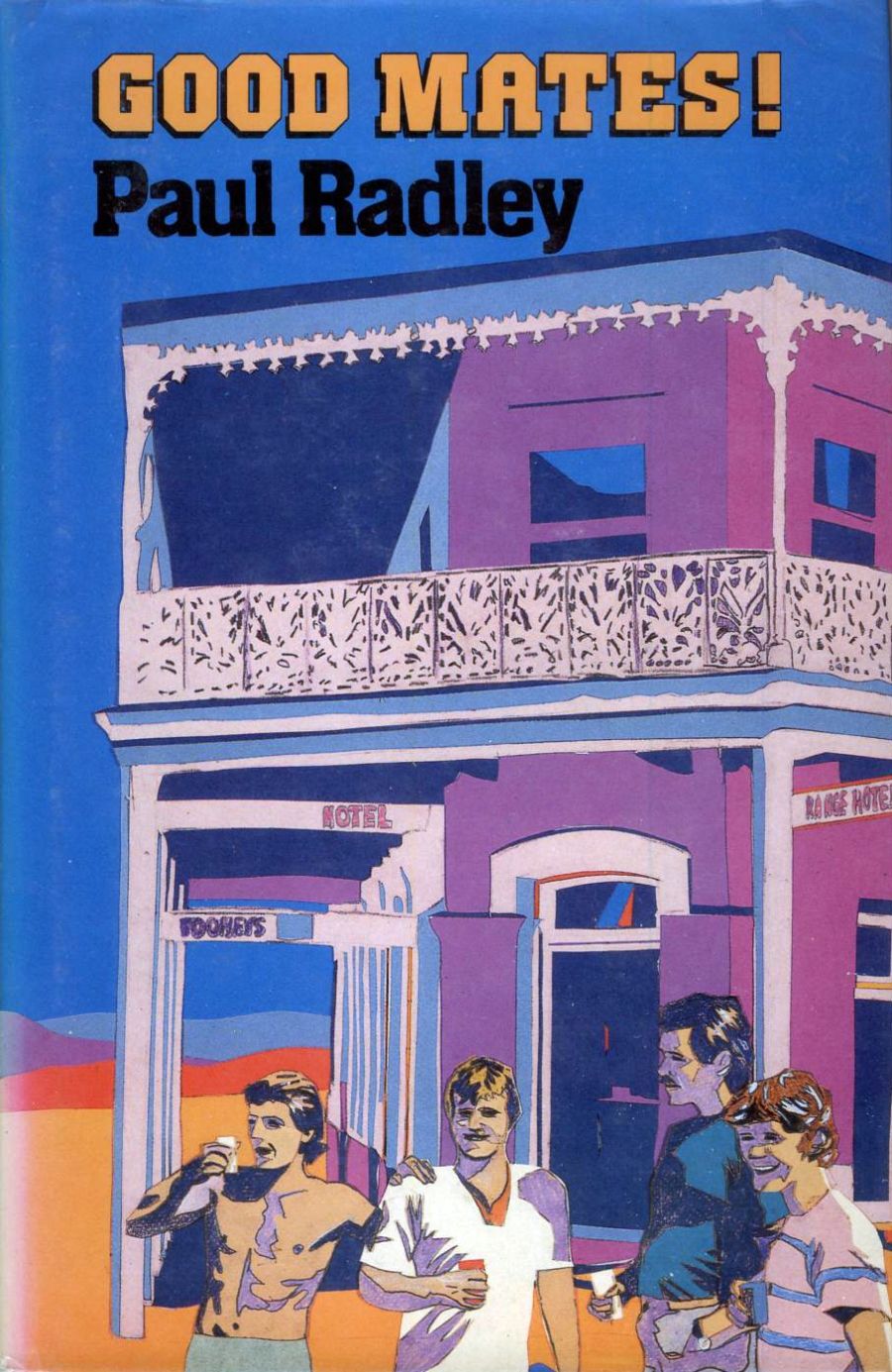
- Free Article: No
- Contents Category: Fiction
- Review Article: Yes
- Online Only: No
- Custom Highlight Text:
Paul Radley’s novels are about loss and growth. The first, the prize-winning Jack Rivers and Me, showed how ‘Peanut’ was forced to shed his imaginary companion as a part of his joining the world of school. My Blue-Checker Corker and Me dealt with a twelve-year-old boy’s reaction to grief at the loss of his racing pigeon. Now, in his latest, he takes us through five years in the lives of two mates from just before they leave school until one of them dies in the mud of New Guinea. The setting of the novel is again his fictitious township of Boomeroo, but the time is now the late thirties and first years of the war.
- Book 1 Title: Good Mates!
- Book 1 Biblio: Allen & Unwin, 371 pp, $16.95 pb
At the beginning, the most important thing the two boys possess is each other. The central action deals with the way this relationship is tested by their differing characters, needs and experiences. Nicky is promiscuous and amoral, but committed to enjoying life in Boomeroo and deaf to the appeals of the warmongers. His mate, Chid Howard, the central consciousness of the novel, is idealistic, wants to make more of his life than Boomeroo can offer. At first, his loyalty to a girl who remains schoolfriend rather than a partner·keeps him celibate, but the trauma of finding that his schoolteacher hero is bisexual frees him from his inhibitions and launches him into such enthusiastic heterosexuality that he soon finds himself returning to the teacher for assistance with the unwanted pregnancy for which he is responsible. Yet in their sexual odysseys both boys remain troubled by the loss of childhood simplicities which is entailed and by the complex relationships between appetite and love.
The key to Chid’s character is his acceptance of responsibility, which eventually leads to his death. Yet he is no hero of the new morality, but a human being who reluctantly accepts the burden of maturity while trying to retain the easier simplicities of boyhood and uncomplicated mateship. It is only life that gets in the way. Similarly, Nicky may brag of his amorality, but his refusal to be caught up in the excitement of war is seen as a positive expression of loyalty to the human values of Boomeroo.
On an early page of the novel, Radley points out that his characters were necessarily chauvinists because they were born in an age that had never even heard of the term. The novel may offend feminists because the boys see girls primarily as sex objects, but the feeling is more than reciprocated. There is certainly an element of male wish fulfilment in the novel’s action, but this is· balanced by a style which celebrates physical enjoyment while still questioning it as an end in itself – just as it questions the adequacy of celibacy. The questioning is enhanced by the dream passages at the end of each chapter – owing too much to Joyce’s emulators to be completely successful – where the factual reality of the narrative is represented as fantasy.
Radley embodies his characters in a township which lives in its words. In the vernacular of a culture now largely past his characters make their lives in their daily conversation. The town lives in its tiny anecdotes, like that of the welshing bookmaker and the grandmother, which make the context within ‘which its inhabitants battle with destiny.
Radley’s first novel was a small gem; his second showed that his success was no accident. But Good Mates! marks an advance on the earlier books – it is great fun to read, it is emotionally and intellectually complex, it is historically accurate, yet its sensibility is utterly contemporary.


Comments powered by CComment